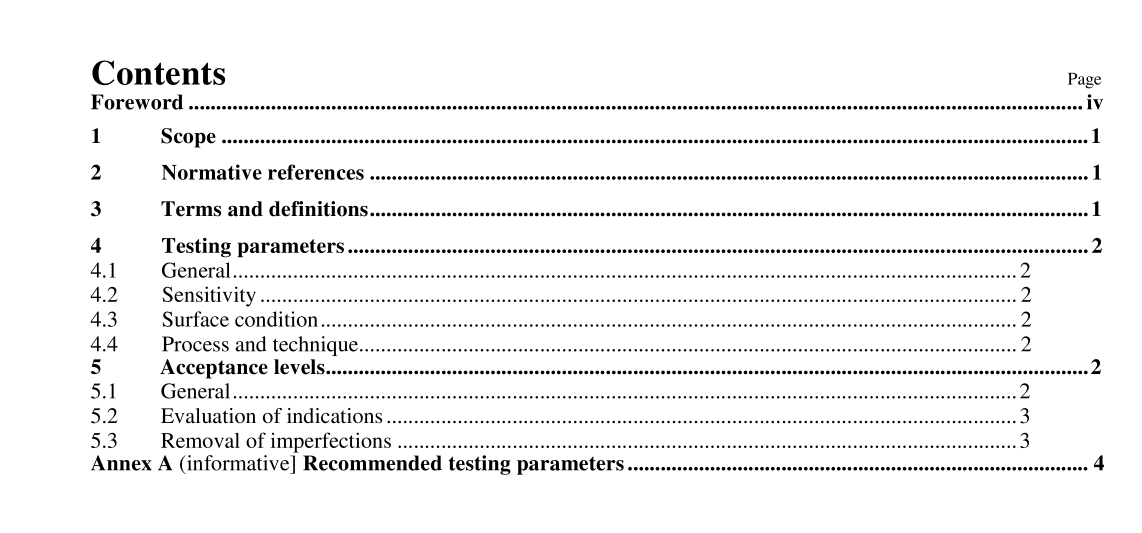ISO 23277:2015 pdf download.Non-destructive testing of welds — Penetrant testing — Acceptance levels
1 Scope
This International Standard specifies acceptance levels for indications from surface breaking imperfections in metallic welds detected by penetrant testing.The acceptance levels are primarily intended for use during manufacture examination, but where appropriate, they
can be used for in-service inspection. The acceptance levels in this International Standard are based on detection capabilities that can be expected when using techniques specified in ISO 3452 series and parameters recommended in Annex A. The acceptance levels can be related to welding standards, application standards, specifications, or codes. Such a relationship is shown in ISO 17635 for ISO 5817 and ISO 10042.
Acceptance levels for grouped indications are not covered by this International Standard.
2 Normative references
The following documents, in whole or in part, are normatively referenced in this document and are indispensable for its application. For dated references, only the edition cited applies. For undated references, the latest edition of the referenced document (including any amendments) applies.
ISO 3452-1, Non-destructive testing — Penetrant testing — Part 1: General principles
ISO 3452-2, Non-destructive testing — Penetrant testing — Part 2: Testing of penetrant materials
ISO 5817, Welding — Fusion-welded joints in steel, nickel, titanium and their alloys (beam welding excluded) —Quality levels for imperfections
ISO 10042, Welding — Arc-welded joints in aluminium and its alloys — Quality levels for imperfections
ISO 12706, Non-destructive testing — Penetrant testing — Vocabulary
ISO 17635, Non-destructive testing of welds — General rules for metallic materials
ISO/TS 18173, Non-destructive testing — General terms and definitions
4 Testing parameters
4.1 General
Many parameters, either individually or in combination, will affect the shape and size of a penetrant indication produced by a weld imperfection.
The following items are significant factors that will affect the shape and size of indications.
4.2 Sensitivity
Penetrant materials are classified in accordance with ISO 3452-2, including a sensitivity level which relates to the ability to detect small imperfections. Generally, higher sensitivity materials should be used for the detection of small imperfections.
4.3 Surface condition
Surface condition is directly related to the minimum detectable imperfection size. Best results are normally achieved when inspecting smooth surfaces. Surface roughness or irregularities (e.g. undercut, spatter) can cause high background and non-relevant indications resulting in a low probability of detection for small imperfections.
4.4 Process and technique
Penetrant systems and techniques should be selected according to the test surface condition. In some cases, the choice will have a direct effect on the limits of reliable detection, for example, the removal of excess penetrant by swab cleaning on rough surfaces is not recommended when seeking small imperfections.Guidance on these matters is given in Annex A and in ISO 3452-1.
ISO 23277:2015 pdf download
